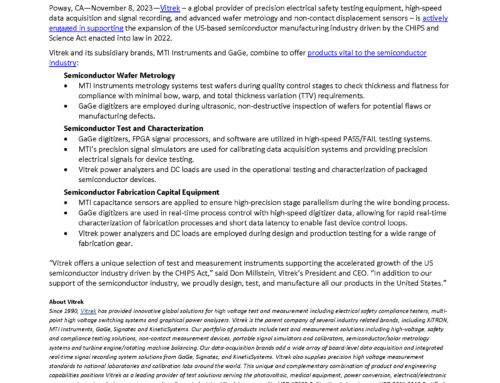An insulating material is one that resists electricity trying to flow through it. Insulators help resist shock and short circuits, making electrical insulation one of the most critical components in any building or system. This also means that measuring resistance is especially important, and you must have a clear understanding of the resistance levels to take adequate precautions. Let’s take a look at the basics of resistance testing, what makes it so important, and how the right equipment can help.
What Occurs During Insulation Resistance Measurement
The insulation resistance test was developed in the 20th century and is one of the oldest methods for assessing insulation quality. During the test, the device in question is measured while the phase and neutral are short-circuited together. Essentially, you’re applying a highly regulated voltage across a dielectric, measuring the amount of leakage current flowing through, and calculating the resistance level with this information. Stable voltages generally include 50, 100, 250, 500, or 1000 VDC. However, based on specific standards, insulation resistance measurement tests may be performed up to 1500 VDC.
Insulation Resistance (IR) Testing Equipment — Which Ones Should I Use?
Choosing the best insulation resistance test equipment comes down to a few factors — safety, accuracy, and repeatability. Your equipment must match the required test voltage levels. Also, ask yourself what equipment you’re testing or where the tests will take place? Additionally, you shouldn’t ignore safety. Keep in mind the importance of partnering with a provider of safe and reliable equipment. Choosing equipment you can count on ensures a smooth and stable testing process.
The Purpose Behind Resistance Testing
Insulation resistance testing is essential to prevent shocks, short circuits, and other dangerous outcomes that risk workers’ safety and equipment longevity. Insulation is applied to products in various industries, from industrial plants to standard multifamily property homes. So resistance testing has a significant impact on plenty of people.
In fact, insulation resistance testing is so necessary that almost 80% of electrical maintenance and tests involve evaluating the integrity of electrical systems. Insulation begins to age as soon as it’s developed, leading to reliability and performance issues that worsen over time. Some of the factors that lead to aging include:
- Electrical Stress
- Mechanical Stress
- Chemical Stress
- Temperature Variation Stress
- Oxidation
- Humidity/Water
Measuring IR can help you decipher the impact of this stress and will help you create a more controlled environment for your current appliances. Testing should also periodically be done on new equipment to know when to perform maintenance and maximize the system’s longevity. You can ensure safety in all locations by relying on accurate electrical resistance tests.
Receive Accurate Results From Your Insulation Resistance Tester by Vitrek
IR testing requires equipment capable of the job. A good insulator will leak very few electrons. The better the insulator, the higher the voltage you need to use for the test. The very best insulators may need as much as 11,000V to evaluate them. You can secure your tester through Vitrek.Our Vitrek 951i and 952i can measure up to 2 Tohms. OUr 953i, 954i, and 955i can measure up to 4 Tohms. Our 957i can measure up to 6 Tohms, and our 98x can measure up to 25 Tohm. Quality results with voltage rails can reach up to 11 KV. Additionally, with multi-dwell functionality and pico-amp leakage measurement, the possibilities are endless. Get your hands on a Vitrek tester by requesting a free product demo, or pair it with our 4700 Precision High Voltage Meter for precise measurement accuracy for high-voltage equipment. Regardless of what you need, stay ahead of the competition with high-quality equipment from Vitrek!



